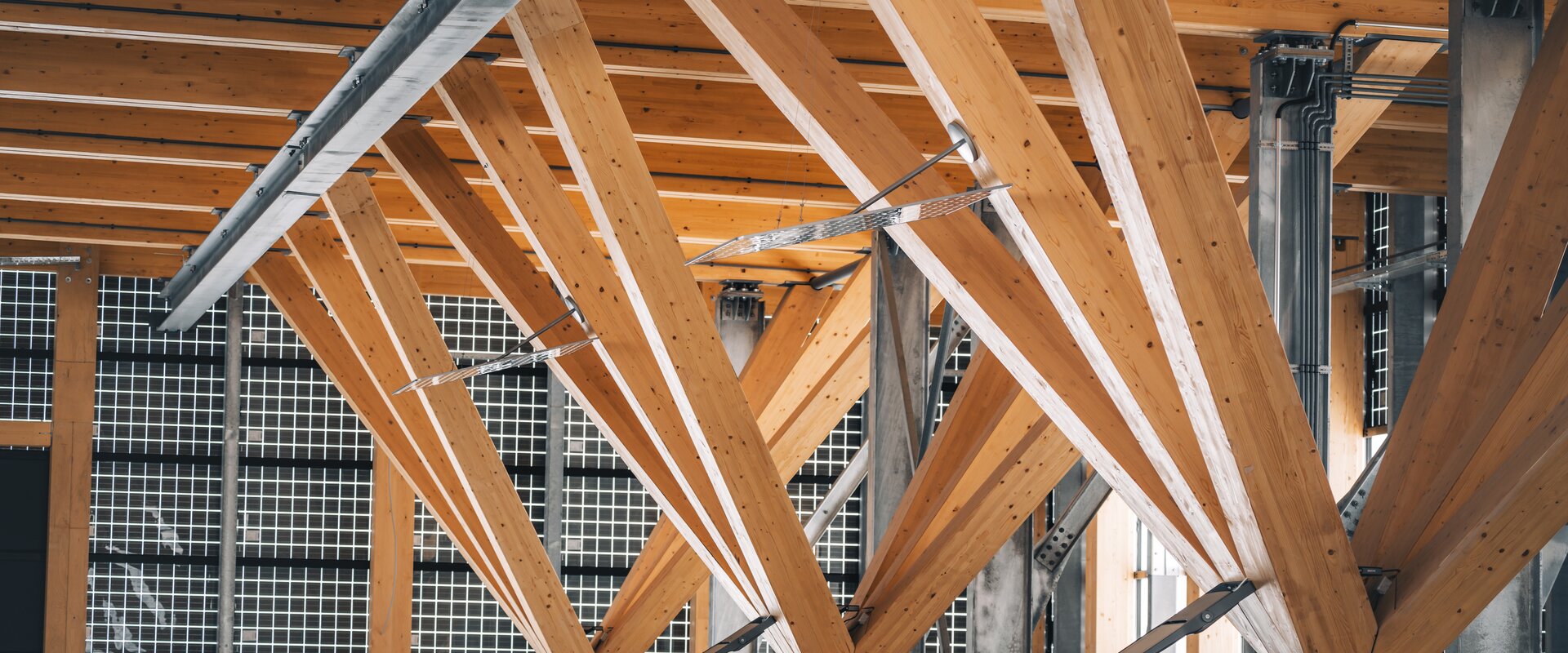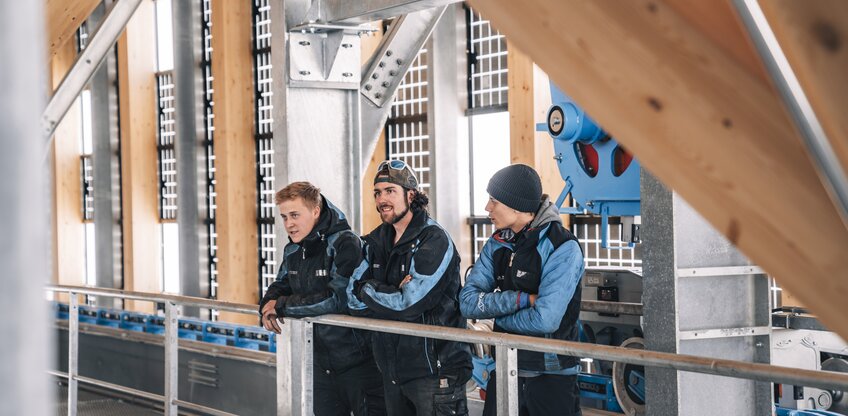



Matterhorn Alpine Crossing
Sustainability as a key cornerstone
Sustainable wherever possible
Zermatt Bergbahnen continued to demonstrate its commitment to greater sustainability in the Alpine region during the construction of the new Matterhorn Glacier Ride II 3S cableway. The drive mechanism for the cableway is environmentally friendly and the façade of the new mountain station houses a further photovoltaic system helping to power the Zermatt ski resort.
Zermatt Bergbahnen has been committed to sustainable development for over 20 years. Sustainability is a key cornerstone of corporate strategy, and environmental considerations play an important part in the construction of new lifts. All building operations as well as renaturation measures and planting projects are supervised by qualified staff. They raise awareness of ecological processes among the work crews and regularly monitor the sites, the disposal of construction waste and the condition of machinery.
The responsible specialists ensured that the work on the Matterhorn Glacier Ride II had the lowest possible impact on the glacier environment. Access to the construction sites was largely via existing cable car routes, and materials were suspended from the lift in order to restrict helicopter transport flights to a minimum. As with the Matterhorn Glacier Ride I, the chosen system is a modern 3S cableway. It is particularly wind resistant and enables the two stations to be connected without the need for towers.
The 3S cableway’s efficient drive system, the LEITNER DirectDrive, ensures environmentally friendly operation. It is more sustainable than other drives, making more efficient use of resources. The system works without a gearbox and therefore requires no transmission oil. In addition, the LEITNER DirectDrive works with very few parts and at a low speed, so maintenance, wear and energy requirements are very low.
Using the power of the sun
Zermatt Bergbahnen has installed another photovoltaics system as an integral part of the Matterhorn Glacier Ride II project. Panels were fitted over an area of 74 m2 of the façade of the Matterhorn Glacier Paradise mountain station. The new system will generate 16,875 kWh of power a year, the equivalent to the energy used by four households. Zermatt Bergbahnen will save around 8900 kg of CO2 annually thanks to the new solar panels.
The investment in the new photovoltaics system continues Zermatt Bergbahnen’s commitment to a greater focus on solar energy in the future. It is the seventh photovoltaics system to be installed in the ski area. With over 2200 hours of sunshine a year, the resort is ideally suited to solar power. Furthermore, the installations are up to 80 percent more productive in the high-Alpine region than on the Central Plateau, thanks to the clear air and reflected radiation. The solar modules have to be carefully selected to withstand extreme weather conditions such as hail and the build-up of ice, so every new build in the ski area undergoes a feasibility study to ascertain whether the outside walls are indeed suitable for solar panels.
Environmental awareness as a cornerstone
Zermatt Bergbahnen is aware that as the biggest cable car specialist in Switzerland it has a unique responsibility. “It is our mission to make Zermatt’s Alpine landscape accessible to all,” says Markus Hasler, CEO of Zermatt Bergbahnen. “We want to set the benchmark in environmental management.” Sustainable action means more than just taking the environment into consideration. Economic and social responsibility must also be kept in balance. Hasler emphasizes that: “Economic, environmental and social responsibility must go hand in hand because without an intact environment there can be no lasting economic or social gain – and vice versa.”
The Switzerland Tourism organization has given Zermatt Bergbahnen a level 3 (leading) rating in its “Swisstainable” scheme.





